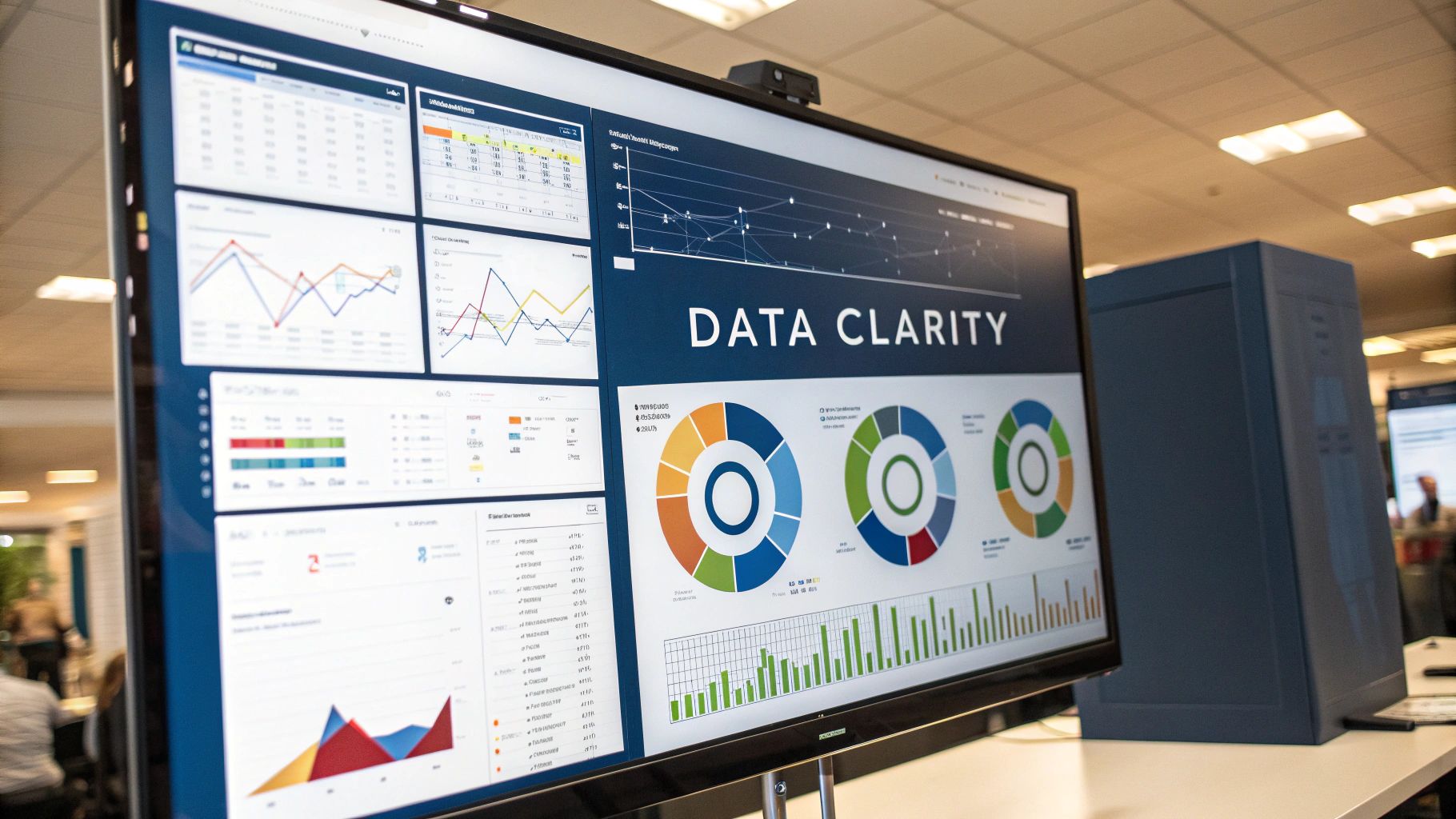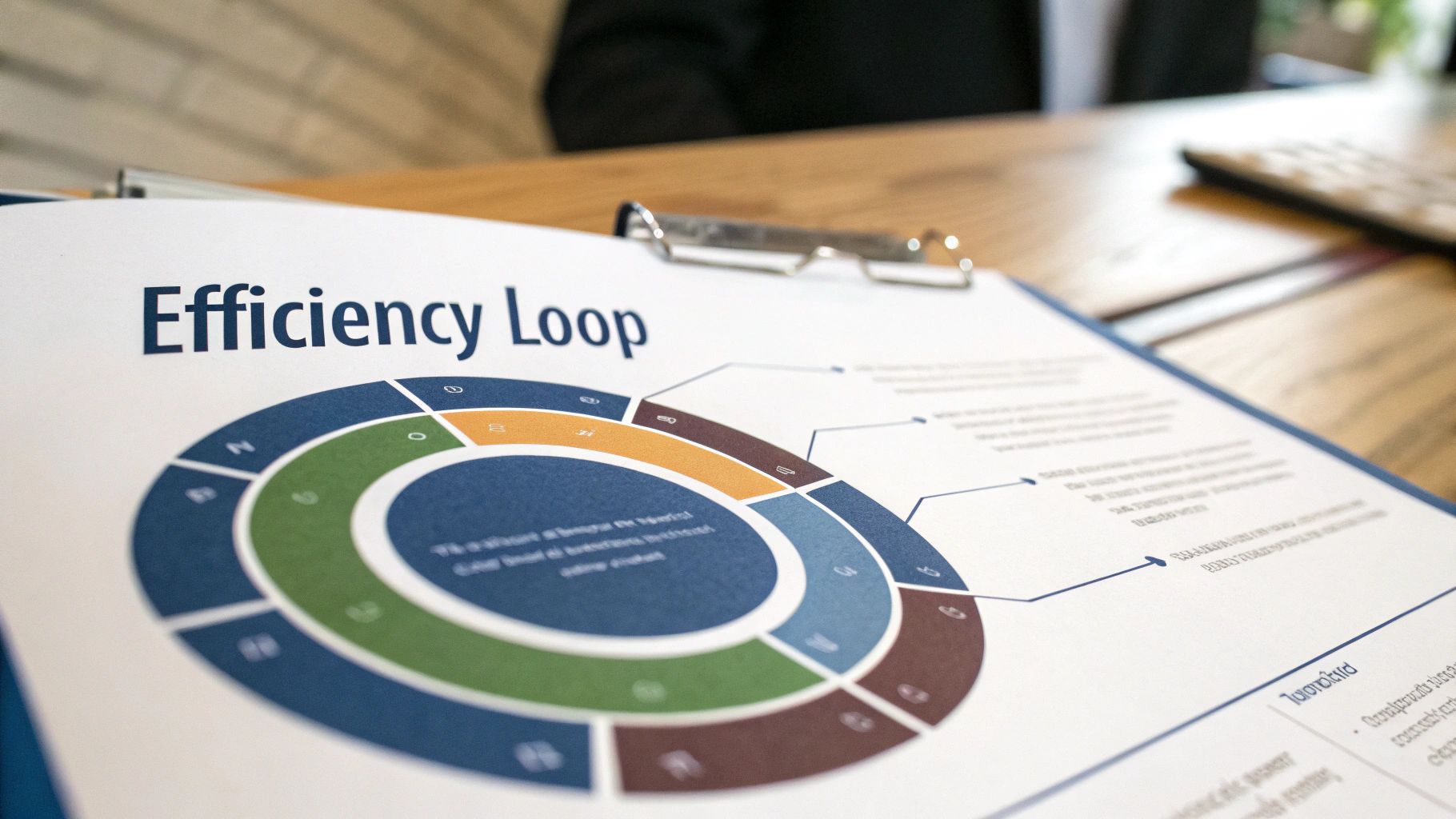Essential Process Improvement Techniques: A Strategic Guide for Driving Measurable Success
Understanding the Evolution of Process Improvement
Process improvement has grown far beyond its manufacturing roots to become essential across many industries and disciplines. It began with statistical process control, pioneered by Walter Shewart at Bell Labs in the 1920s. His groundbreaking PDCA (Plan-Do-Check-Act) cycle created a systematic way for companies to plan changes, implement them, verify results, and standardize improvements. This methodology continues to guide quality improvement efforts today. Learn more about this foundational development here.
Historical Roots and Modern Adaptation
Manufacturing efficiency drove early process improvement efforts through methods like Shewart's PDCA cycle. This laid the foundation for later approaches like Six Sigma, which emerged in the 1980s with its focus on using data to reduce defects and variations. At the same time, Lean Manufacturing developed from Toyota's production system, aiming to eliminate waste while maximizing customer value with minimal resources.
Core Principles Versus Modern Needs
While fundamental principles like quality control and waste reduction remain crucial, today's organizations face new challenges from globalization and technology changes. This has prompted the development of enhanced techniques that combine traditional methods with modern tools like data analytics and automation for better results.
Reimagining Foundations in Dynamic Environments
Leading companies now blend time-tested improvement methods with new technologies. They use predictive analytics to spot potential issues early and adopt Agile practices to stay flexible as conditions change. This balanced approach preserves proven techniques while embracing innovation to maintain competitiveness.
Companies focusing on process improvement today work to build a culture of continuous enhancement throughout their organizations. Understanding this evolution of process improvement helps businesses adapt and succeed in rapidly changing markets.
Core Methodologies That Drive Real Results

Organizations today rely on proven methods like Six Sigma, Lean, and Total Quality Management (TQM) to boost performance and efficiency. These approaches combine clear frameworks with practical flexibility, letting companies adapt them to their specific needs.
Six Sigma: Building Precision Through Data
The early 1980s marked the birth of Six Sigma at Motorola, bringing a new level of precision to quality control. This method uses data to track and eliminate defects, measuring them per million opportunities (DPMO). Major companies like General Electric embraced Six Sigma in the 1990s, saving billions through better quality. Learn more about its history and impact.
Lean: Streamlining for Maximum Efficiency
Lean comes from Toyota's production system and focuses on removing waste to deliver more value to customers. By cutting out unnecessary steps and activities, companies can operate efficiently with fewer resources. This keeps the focus where it matters most - meeting customer needs without extra costs.
Total Quality Management: Ensuring Quality from All Corners
TQM takes a company-wide approach by making quality everyone's responsibility. Unlike Six Sigma's heavy focus on statistics, TQM creates standard processes while spreading accountability across teams. This shared ownership helps build lasting quality improvement.
Real-World Application and Adaptation
Many companies blend these methods to solve specific challenges. For example, healthcare providers use Lean to improve patient flow and reduce wait times, while manufacturing firms apply Six Sigma to perfect their production lines.
Here are the key steps for putting these methods into practice:
- Assess Current Processes: Map out where improvements are needed
- Select Suitable Methodology: Pick the right tool for your goals
- Customize Implementation: Adapt the approach to fit your needs
- Monitor Metrics: Track key measures to guide improvements
Common Pitfalls and Success Metrics
Change management issues and misaligned goals often create hurdles when rolling out these methods. Getting leadership support and keeping all teams engaged helps overcome these challenges.
Companies can measure success through process cycle efficiency and defect reduction rates. Regular tracking ensures improvements stick and contribute to ongoing success.
Using these proven methods can help your organization make real progress while building a culture focused on getting better every day.
Data Analytics for Process Excellence

Data analytics has become essential for improving business processes, helping companies turn raw data into practical insights. Studies show organizations that effectively use analytics find 56% more opportunities to enhance their operations. Like using the right lens to see clearly, choosing relevant metrics gives you the sharpest view of what needs improvement.
Choosing Key Metrics and Setting Baselines
The first challenge is identifying which numbers truly matter for your goals. Many companies struggle to translate their daily work into measurable data points. Key Performance Indicators (KPIs) like production cycle times or error rates provide clear targets to work toward. Starting with accurate baseline measurements lets you track real progress over time and make decisions based on facts rather than guesses.
Using Statistics to Drive Real Changes
Once you have solid metrics in place, statistical analysis helps turn those numbers into useful insights. Think of it like refining raw materials - careful processing yields better results. Tools like regression analysis and hypothesis testing help teams predict outcomes and confirm whether their changes actually work.
Creating Clear Visual Stories
Visual data helps bridge the gap between complex numbers and practical use. Clear charts and graphs make it easy to spot patterns and problems quickly. For example, a factory might use color-coded maps to find inconsistent processes, helping them fix issues before they become serious problems.
Looking Ahead with Smart Analytics
Modern analytics can help predict future trends, not just measure what's happening now. Using algorithms and machine learning, teams can prepare for what's coming instead of just reacting to problems. Regular monitoring creates feedback loops that encourage constant improvement - like steering a ship, small adjustments help stay on course.
Solving Data Collection Problems
Getting good data isn't always easy. Wrong numbers or mismatched data sources can throw off your whole analysis. Using reliable tools that maintain data quality is crucial. For instance, having one system that handles both collecting and analyzing data reduces errors and keeps information flowing smoothly.
By applying these analytical methods thoughtfully, organizations can create lasting improvements and build a culture that values data-driven decisions. Learn more about AI solutions that can help with this process.
The original image and links are preserved while making the content more natural and engaging:
Building Your Process Improvement Strategy

A strong process improvement strategy works like a well-designed map that guides your organization toward better performance and efficiency. To create lasting positive change, you need an approach that sets clear priorities, involves key people, and carefully manages transitions. Let's explore the essential elements that make this possible.
Strategic Frameworks for Process Improvement
The first step is choosing where to focus your efforts. Hoshin Kanri offers a proven framework for aligning improvements across your organization. This method helps ensure that teams at every level are working toward the same goals, much like rowers moving in sync to power a boat forward.
Engage Stakeholders and Manage Change
Getting buy-in from stakeholders early makes a huge difference in success rates. Start by identifying who will be most affected by or influential in the changes. The Catchball technique works well here - it creates an open dialogue where people can share ideas and concerns, helping them feel ownership of the improvement process.
Change often meets resistance, and that's normal. Smart organizations prepare for this by investing in training and maintaining clear communication. Using the PDSA cycle (Plan-Do-Study-Adjust) lets you test changes on a small scale first, reducing risks and building confidence.
Crafting Improvement Roadmaps
A detailed roadmap keeps everyone focused on what matters. This document should outline your main objectives, timelines, and resource needs. Value stream mapping helps you spot where current processes need work and shows how improved workflows should look.
Sustaining Momentum and Long-Term Success
Success requires ongoing attention and adjustment. Data analytics provides the hard numbers needed to track progress and hold teams accountable. Regular Gemba walks, where managers observe actual work processes firsthand, help maintain focus and spot new opportunities for improvement.
Building lasting improvements takes careful planning, strong teamwork, and consistent follow-through. When you combine these elements with the right tools and techniques, you create positive change that sticks. For organizations looking to improve their document handling and workflow processes, Whisperit provides AI-powered solutions that complement these improvement efforts.
Creating a Culture of Continuous Improvement
Organizations achieve lasting success when they make ongoing improvement part of their DNA. This means going beyond just implementing new methods - it requires developing a mindset focused on growth and development across every level of the organization.
Overcoming Resistance to Change
People naturally resist changes to established ways of working. To address this challenge effectively, many organizations use the Catchball method - a collaborative approach where ideas flow freely between management and staff through open dialogue. This builds trust and gives employees ownership over improvement efforts, making them active participants rather than passive recipients of change.
Training Programs That Drive Engagement
Effective training helps employees develop the skills and mindset needed for ongoing improvement. Take Toyota's successful use of the 5S methodology in their day-to-day operations. By teaching employees to Sort, Set in Order, Shine, Standardize and Sustain their workspace, they create systematic habits that boost efficiency and quality.
| Element | Description |
|---|---|
| Sort | Keep only necessary items |
| Set in Order | Organize tools and materials for easy access |
| Shine | Clean workspace and equipment regularly |
| Standardize | Implement consistent procedures |
| Sustain | Maintain and review practices regularly |
Building Leadership Support
Leaders play an essential role in creating and maintaining an improvement culture. Without active support from management, improvement efforts often fade away. Gemba walks, where leaders directly observe work areas and engage with employees, demonstrate commitment while uncovering improvement opportunities from those who know the work best.
Sustaining Momentum with Effective Communication
Clear communication keeps improvement efforts moving forward. Regular stand-up meetings give teams dedicated time to discuss challenges and brainstorm solutions together. This keeps everyone aligned and ensures good ideas can emerge from anywhere in the organization.
Making continuous improvement part of company culture requires sustained effort and commitment. By focusing on employee engagement, maintaining strong leadership support, and establishing clear communication channels, organizations can create lasting change that evolves to meet new business challenges over time.
Measuring and Sustaining Your Success

Keeping track of process improvements and maintaining their benefits over time requires careful measurement and consistent effort. The foundation starts with selecting meaningful Key Performance Indicators (KPIs) that align with your goals. These metrics act as guideposts, showing where you're making progress and which areas need attention. For example, tracking defect rates in manufacturing or patient wait times in healthcare provides clear data to drive real improvements.
Selecting and Implementing KPIs
The best KPIs connect your strategic goals with specific improvements you want to make. Getting input from both leadership and frontline staff helps ensure these metrics reflect what matters at every level of the organization. Once you've chosen your KPIs, put them into easy-to-read dashboards or reports so everyone can track progress and take action when needed.
Systems for Monitoring and Adjustment
Simply setting KPIs isn't enough - you need ongoing monitoring systems to keep improvements on track. Regular reviews and feedback loops help teams spot issues early and make quick adjustments. Think of it like a thermostat - small, frequent tweaks help maintain steady performance and prevent major problems from developing.
Preventing Backsliding and Standardization
To make improvements stick, successful processes need to become standard practice. Document what works well and add it to your standard operating procedures (SOPs). This creates clear guidelines that don't depend on individual knowledge, helping new improvements become permanent parts of how work gets done.
Tools for Documentation and Progress Tracking
Use practical tools like value stream maps and A3 reports to record and share improvements across your organization. These visual aids make it easy to see progress and help teams learn from both successes and setbacks. Regular checks through audits and walking the workspace help verify that processes stay aligned with standards.
By putting these measurement and maintenance practices in place, organizations can both track progress and make sure improvements last. For companies looking to make document-heavy processes more efficient, Whisperit provides AI solutions that streamline workflows while maintaining security.